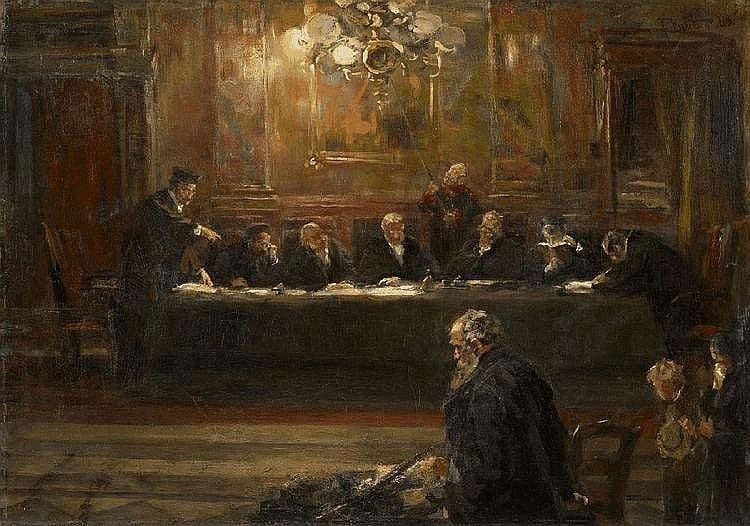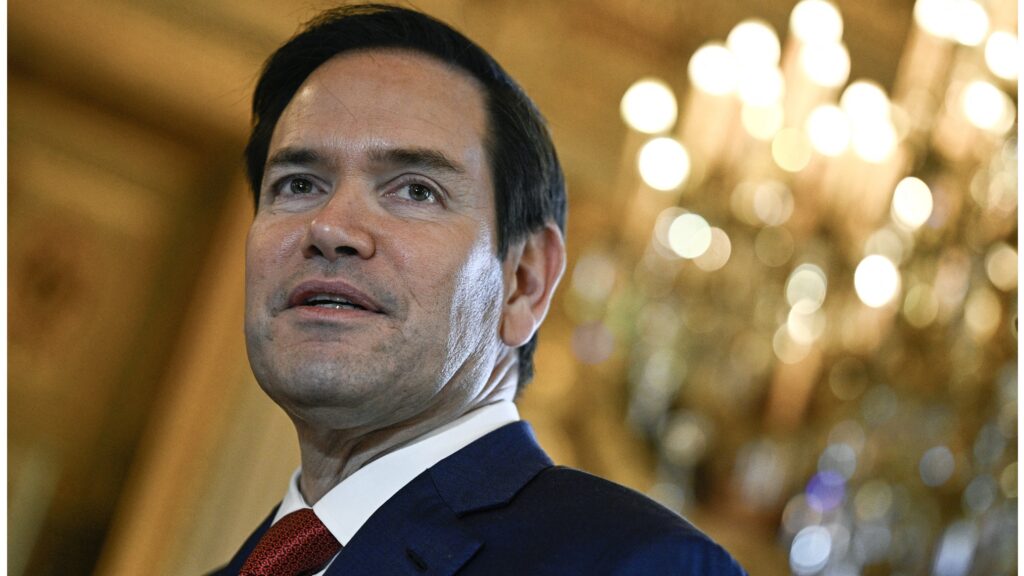Judicial confirmation battles have become particularly heated in the United States. Most recently, in April 2021, President Bidenestablished a commission of legal scholars to examine the future of the Supreme Court. The commission might consider adding seats to the Court, and there is some suspicion that the commission will be cover for ‘court packing’. I recently testified at the Commission’s first public hearing. Although such news rarely appears on the European radar, narratives of ‘court packing’ are not foreign to European constitutional discourse, particularly its ‘rule of law’ debates. Some lessons for Europe might be gleaned from the current debates in the United States.
First, some background. Over the last several decades, the United States Supreme Court has sought to decide and resolve controversial social, moral, and political issues for the entire country. Such issues include or involve abortion, same-sex marriage, and sexual intimacy, as well as the variety of criminal procedure rules (such as the requirement for the suppression of evidence obtained illegally by police) that a progressive Supreme Court created in the 1960s and 1970s and imposed on the entire country. So long as the Supreme Court decides such matters, the appointment of new Justices to the Court will remain heated and controversial. The same seems to be true of European courts that decide similar cases, even if they do so under different competences and review powers.
The Supreme Court should follow a more ‘originalist’ approach to constitutional interpretation
The question from the American perspective is whether there are any mechanisms to reduce the temperature of confirmation battles, or to diminish the importance of the Supreme Court in modern society. In my testimony before the Commission, I advanced three possibilities. First, the Supreme Court should follow a more ‘originalist’ approach to constitutional interpretation. An originalist Court is not one in need of reform because on many controversial social and political questions the Constitution leaves the answers to the democratic process, and on other questions an originalist approach does not reliably lead to results that only one political party favours. That should be expected—most constitutions are largely structural, channelling democratic politics while protecting the most fundamental of natural rights that should never be subject to legislative whim.
Second, America’s political and constitutional culture should reinvigorate what is sometimes called ‘departmentalism’. Departmentalism is the idea that courts, including the Supreme Court, have the final say on interpretations of law in cases and controversies that come before them, and that their judgements are binding on the parties. However, the political branches need not follow the Supreme Court’s reasoning as a political rule, at least not until good faith requires accepting that a constitutional question has been fully settled.
Third, it is certainly true that America is unique in providing lifetime tenure for the judges of its apex court. Such lifetime enure has much to commend it; it was historically understood to be the bulwark of an independent judiciary. Nevertheless, it would not be unreasonable to amend the United States Constitution to provide for a Supreme Court fixed at nine Justices, with staggered, eighteen-year terms. There has been much consensus in the United States about this proposal. But, importantly, the proposal cannot work without also reforming the process for appointing and confirming judges.
Originalism
President Trump appointed at least two, and probably three, self-avowed ‘originalists’ to the US Supreme Court, and it is now likely that originalists constitute a majority of the Court. As I explain in my book A Debt against the Living: An Introduction to Originalism (Cambridge 2017), originalism stands for the proposition that we should interpret the Constitution with its original meaning, with the meaning the words would have had to the Framers who wrote it and the public that ratified it. Context, structure, the specific intent of individual Framers or ratifiers, and historical and legal background are all useful in ascertaining original meaning, but only the meaning itself is what governs. Importantly, although originalism will often lead to determinate answers, in many cases it will lead to a range of plausible answers.
The argument for originalism, in a nutshell, is that the Constitution is a certain kind of document: it is a set of public instructions, largely to our elected officials. As such, it is interpreted the way one would ordinarily interpret a public instruction. That is, it should be interpreted with a public meaning, and not a secret, or esoteric, or poetic meaning.
After all, the Constitution is not a secret code, nor a Socratic dialogue, nor a poem or novel. The Constitution, as a public instruction, should also be interpreted with its original meaning, that is, the meaning its authors intended to convey at the time it was written. It is possible for contemporary meaning to diverge from original meaning, but this could only transpire in one of two ways. The first is linguistic drift. Perhaps ‘domestic violence’ meant something different to the American Framers (insurrection) than it means to modern ears (spousal abuse). Or perhaps ‘rights’ in modern discourse implies an entitlement (for example, the government must pay for your lawyer if you cannot afford one), instead of a negative right (you may have a lawyer if you desire one and can afford one). But surely we would not interpret the Constitution consistently with the contemporary, drifted meaning. No theory of political philosophy of which I am aware would justify allowing accidental shifts in language to determine the content of law.
A ‘right’ within the meaning of the Constitution is an entitlement to act free of interference if one has the ability, wherewithal, and desire to so act
The second reason why contemporary meaning might diverge from original meaning is because some intervening occurrence has altered modern perceptions of meaning. Take again the example in the Sixth Amendment to the US Constitution that ‘the accused shall enjoy the right […] to have the assistance of counsel for his defense’. This ‘right’ sounds like it could plausibly require the government to pay for a defendant’s lawyer. But that is only because the Supreme Court said so several decades ago, in a case called Gideon v. Wainwright (1963). That view is illogical as a matter of original meaning because The New York Times does not have a right to a government-funded printing press, and private citizens do not have the right to taxpayer-subsidized firearms purchases. A ‘right’ within the meaning of the Constitution is an entitlement to act free of interference if one has the ability, wherewithal, and desire to so act. The contemporary meaning of the Sixth Amendment’s right to counsel deviates from the original meaning only because an institution supposed to be controlled by the Constitution deviated from that original meaning at some point in time.
To be sure, maybe we should deviate from the original meaning of the Constitution, but that is a separate question. It is plausible to say that the original Constitution—even as it has been corrected by the Reconstruction and other amendments guaranteeing equal rights and suffrage—is too old and outdated and, moreover, hard to amend, to work today. If these premises are correct, then nonoriginalism, or ‘living constitutionalism’, is a plausible second-best method of constitutional change.
Importantly, that does not, in my view, make nonoriginalism a method of interpretation. Even in the nonoriginalist constitutional system something will still be interpreted with its original public meaning: namely, the judicial opinions published by the Justices of theSupreme Court. That is the only way public and private actors will know what the Court requires of them. The debate between originalism and nonoriginalism, in other words, is a debate over which sources legitimately supply the content of our constitutional rules: the parchment under the glass at the National Archives, or the modern judicial opinions, even the ones that deviate from that parchment’s text.
For the originalist, what makes the Constitution legitimate and binding, and worthy of our adherence today? There are many possible answers to this question, but here, in my view, is the most persuasive. We know something must make a constitution binding. No political society could be possible if it were otherwise. But we also know that it cannot be the case that a constitution is only binding if every individual in the polity personally agrees with it in all its particulars. Three hundred million Americans are bound to have differing views. Something must make a constitution legitimate and therefore binding even in the face of disagreement.
In free, liberal societies—liberal in the classical sense, viz. societies committed to natural rights and freedom of thought and inquiry—what makes a constitution legitimate and binding is successfully balancing self-government and liberty. A constitution for a free society must on the one hand enable self-government: it must allow us in some circumstances, through democratic deliberation, to authorize the use of coercive power to shape what kind of society we wish to have politically, economically, culturally, socially, and even morally. On the other hand, the exact same constitution must also preserve a large measure of natural liberty; otherwise, there would have been no point in getting out of the state of nature, a state of perfect liberty and equality, if we were made worse off by doing so. These two objectives are in tension, which is why any constitution for such a society will require a balancing act.
In my view (which I advance in my book on the subject), the US Constitution as it has been corrected by the Reconstruction Amendments and subsequent changes sufficiently balances these two competing objectives, even if it does so imperfectly and reasonable people disagree over the particulars. Therefore so long as we the people today—not as a matter of blind veneration to the past, but as a matter of present-day social facts—continue to view the Constitution as successfully balancing these objectives, that is sufficient to make the Constitution legitimate and binding. And, if it is legitimate and binding, we follow it—including by treating it as we would treat any other binding public instruction or public legal instrument, viz. with its original public meaning.
The Constitution does not enact a libertarian paradise, nor does it compel a progressive polity with wealth and income redistribution
To be sure, if originalism always led to politically conservative results, then one would have to view it with scepticism. But that is simply not the case, for three reasons. First, originalism sometimes requires progressive results. To take two obvious examples, conservatives and libertarians are bound to the Sixteenth and Seventeenth Amendments, permitting federal taxation of incomes and requiring the direct election of Senators, even though they were enacted as part of a progressive agenda in the early twentieth century. (Before the Seventeenth Amendment, US Senators were appointed by the state legislatures.) Second, in many instances an originalist outcome will have no political valence, or originalists will disagree among themselves as to the correct answer. For example, there is a vigorous intra- originalist dispute over whether the original meaning of the Fourteenth Amendment ‘incorporates’, i.e., applies, the federal Bill of Rights against the states. Third, on many controversial issues the Constitution is simply silent, leaving such matters to the democratic process. The Constitution does not enact a libertarian paradise, nor does it compel a progressive polity with wealth and income redistribution, and neither does it compel conservative views on family, marriage, or religion in the public square. Properly understood, our Constitution seems to permit all, or at least most, of these options, leaving the ultimate decision of the kind of regime and polity we will have to democratic deliberation.
Departmentalism
Even an originalist Court, however, can and should be further limited by reinvigorating the concept of ‘departmentalism’. Today it is widely assumed that the Court is the final arbiter of the Constitution’s meaning and is supreme above the other branches in the task of constitutional interpretation. But that description of the judicial role is a far cry from Chief Justice John Marshall’s famous holding in Marbury v. Madison (1803), the case in which he asserted the Supreme Court’s power of ‘judicial review’ over federal legislation.
Marshall’s famous paragraph declared, in full: ‘It is emphatically the duty of the Judicial Department to say what the law is. Those who apply the rule to particular cases must, of necessity, expound and interpret the rule. If two laws conflict with each other, the Court must decide on the operation of each.’
In this paragraph, Marshall makes two points. First—and this has come to be known as judicial review—Marshall explained that when more than one law applies to a given case, the judges must decide the operation of each. This requires interpreting those laws. And, when those laws conflict, the judge must decide which law controls, as when a statute enacted later in time conflicts with a statute enacted earlier in time. In the event of a conflict between a congressional enactment and a constitutional provision, the latter prevails because the Constitution is paramount law, antecedent and superior to ordinary law. The power of judges to review the constitutionality of legislative enactments follows from basic conflict-of-laws principle and the nature of a higher-law constitution.
Second, Marshall says that in discharging this duty, judges do so in particular cases. In those cases, judges refuse to give effect to the law that they hold to be invalid or inoperable. That law, however, remains on the books; the law is not repealed until Congress chooses to repeal it. Government officials can continue to enforce the statute. To be sure, in subsequent cases, judges are likely to follow the Supreme Court’s prior holding as precedent. But they may not always do so, and they may supply reasons for the Supreme Court to reconsider its prior position. Perhaps the best observer of the operation of judicial power in the early United States was Tocqueville, who wrote the following in Democracy in America (Vol. 1, Part 1, Ch. 6):
‘Whenever a law which the judge holds to be unconstitutional is argued in a tribunal of the United States he may refuse to admit it as a rule […]. [F]rom the time that a judge has refused to apply any given law in a case, that law loses a portion of its moral cogency. The persons to whose interests it is prejudicial learn that means exist of evading its authority, and similar suits are multiplied, until it becomes powerless. One of two alternatives must then be resorted to: the people must alter the constitution, or the legislature must repeal the law. The political power which the Americans have intrusted to their courts of justice is therefore immense, but the evils of this power are considerably diminished by the obligation which has been imposed of attacking the laws through the courts of justice alone […]. [W]hen a judge contests a law applied to some particular case in an obscure proceeding, the importance of his attack is concealed from the public gaze, his decision bears upon the interest of an individual, and if the law is slighted it is only collaterally. Moreover, although it is censured, it is not abolished; its moral force may be diminished, but its cogency is by no means suspended, and its final destruction can only be accomplished by the reiterated attacks of judicial functionaries.’
Every time a judge refuses to give effect to an unconstitutional law, that law loses its ‘moral cogency’
Here, in a nutshell, is a description of ‘departmentalism’, as opposed to what we might term ‘judicial supremacy’. UnderTocqueville’s—and Marshall’s—conception of the judicial role, judges interpret the laws and the Constitution as part of the judicial power (or duty) to decide judicial cases. Every time a judge refuses to give effect to an unconstitutional law, that law loses its ‘moral cogency’. But future litigants cannot rely on that case alone; they must bring their own suits in their own cases if they desire a similar result. Over time, perhaps many judges, over a sustained period of time, would refuse to give effect to the law, rendering it effectively a dead letter. Or perhaps Congress will repeal the statute. But a single pronouncement by a federal judge—or by a 5–4 decision of the Supreme Court—is insufficient to wipe a law from our statute books.
Importantly, departmentalism allows the other departments of government to interpret the Constitution in their own ways, pursuant to their own constitutional functions. (Hence the term ‘departmentalism’.) Departmentalism is what allowed Thomas Jefferson to pardon offenders under the infamous Sedition Act of 1798 even though that law had been upheld by the lower courts that considered it. It allowed Andrew Jackson to veto the renewal of the Second Bank of the United States because he thought it was unconstitutional, notwithstanding the fact that the Supreme Court had held the bank to be constitutional twenty years earlier.
Departmentalism even allows Congress or the Executive to act where the Supreme Court has held that it would be unconstitutional to act, because not all congressional or executive actions will become subject to judicial review. In perhaps the most infamous case in all of American constitutional history, the Supreme Court in Dred Scott v. Sandford (1857) held that black individuals were not ‘citizens of the United States’ within the meaning of the Constitution, and that Congress lacked the power to make them citizens. Yet when Abraham Lincoln became President, his State Department issued passports to black Americans and his Treasury Department authorized black persons to captain vessels in the coasting trade. Under the law at the time, such privileges could only be granted to ‘citizens of the United States’. If the Supreme Court’s judicial opinion in Dred Scott was the ‘supreme law of the land’, then the State and Treasury departments acted unlawfully. As it was, the Executive Branch, in executing its functions, was allowed to adopt its own interpretation of the Constitution.
Term limits?
Perhaps it is wishful to think that reinvigorating originalism and departmentalism will solve America’s problem with its Supreme Court. What seems clear is that the proposal of the modern progressives—to ‘pack’ the Supreme Court with Justices they favour—does not solve the problem of heated confirmation battles. The problem with this proposal is that it is not clear where it will end. If the progressives begin to add seats to the Supreme Court to obtain a progressive majority of judges, why should the conservatives not do the same when they return to power? (As an aside, it is particularly amusing to hear progressives advocate for proposals that, when allegedly accomplished by conservative supermajorities in Hungary, is decried as undermining the rule of law.) More fundamentally, packing the Supreme Court suggests the Court is politicized, and implies an attempt to influence the Court’s direction, which undermines confidence in the rule of law.
Nevertheless, I have previously proposed an amendment to the Constitution that would fix the number of Justices at nine, and create staggered, eighteen-year terms, such that each President will get two appointments per term. This concept is in fact familiar to European systems of constitutional justice. Under such an approach, the composition of the Court will not depend on strategic retirements by Justices or untimely deaths. Such a proposal is not foolproof. Will Justices make decisions knowing that they will seek lucrative jobs in the private sector after their terms expire? Will that undermine judicial independence? What happens when there is an unexpected death? But it may be an improvement over lifetime tenure.
Term limits will not solve anything without also reforming the confirmation process
The proposal’s biggest hurdle is that the Senate might block confirmation, leading to multiple vacancies to be filled at one time by a subsequent President. In other words, term limits will not solve anything without also reforming the confirmation process. I have also previously proposed revamping the appointment process altogether for both executive and judicial branch nominees. Under my proposal, all nominees would be automatically confirmed after a period of three or four months, but at any time a Senator can call the nominee for a vote and the Senate can reject the nominee. A constitutional amendment to this effect would make it highly unlikely that a President will be unable to make a new appointment after a judicial term has expired, while still reserving an important senatorial check. Under this proposal, President Trump’s cabinet would have been quickly confirmed (as it should have been), and Merrick Garland would at least have gotten a vote (which he deserved).
What seems clear is that court packing will not solve the long-term problems regarding the role of the Supreme Court in American government and American life. I remain curious to see where court-packing narratives lead European constitutional discourse, and perhaps the American experience can provide some comparative insight into its potential pitfalls.








